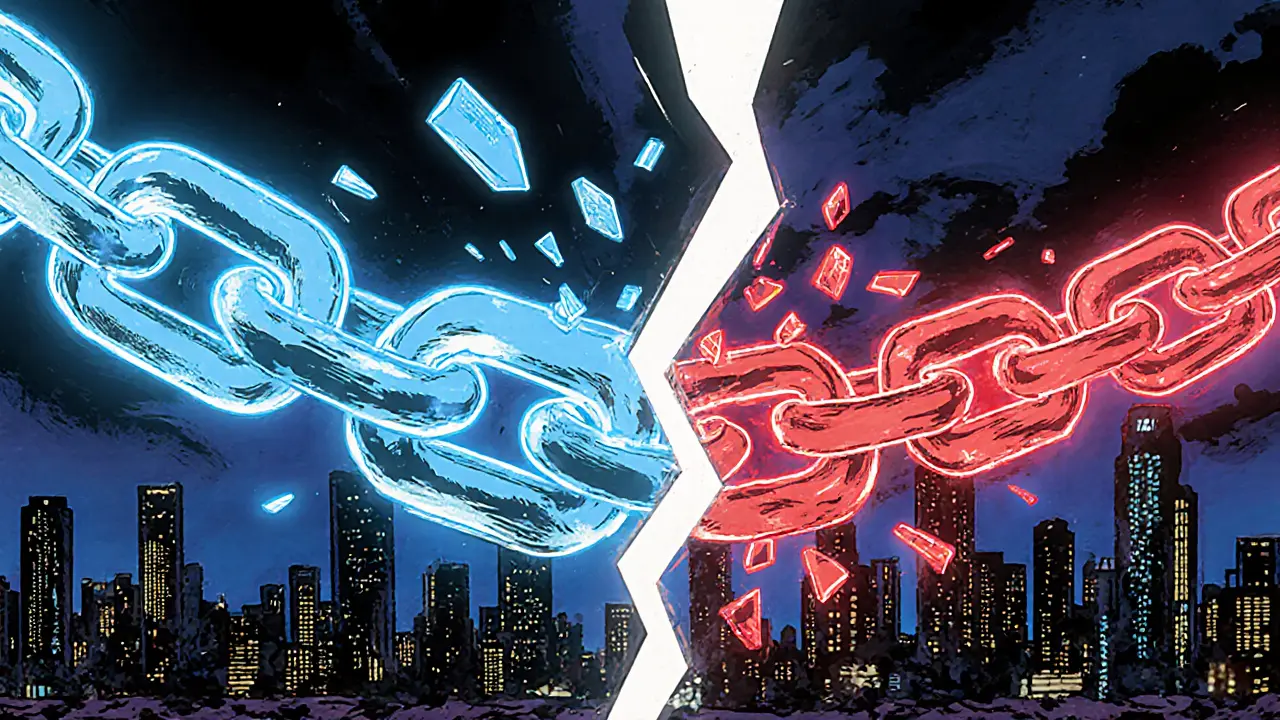Contentious vs Planned Forks: A Blockchain Guide
Learn the key differences between contentious and planned blockchain forks, their technical traits, market impact, and how governance shapes each type.
Read MoreWhen talking about contentious forks, splits in a blockchain that trigger heated debate among developers, investors, and users. Also called fork disputes, these events can reshape an ecosystem overnight. A hard fork, a backward‑incompatible upgrade that creates a new chain is the most visible type, but a soft fork, a backward‑compatible change that still may cause splits if nodes don’t upgrade can also turn contentious when a sizable community refuses to follow the new rules. When a chain split, the original and upgraded versions continue side by side, you often see token swaps, price volatility, and a battle over who controls the future. Most of the drama stems from a governance dispute, conflicts over decision‑making processes, voting power, or development direction that pushes a community to fork rather than compromise.
First, the technical catalyst matters. A hard fork may be needed to fix a critical bug, add a new feature, or change the consensus algorithm. If the upgrade improves scalability or security, supporters rally behind it. Yet when the change threatens existing holdings—like altering token supply rules or moving to a different proof‑of‑stake model—skeptics raise alarms. Second, the social layer amplifies tension. Communities built around a coin often have strong identity ties; when leaders propose changes without broad consent, trust erodes fast. Third, market forces add pressure. Traders watch fork announcements like a ticker, betting on which chain will retain value. The resulting speculation can turn a technical upgrade into a price war, pushing neutral observers to pick sides.
Real‑world examples illustrate these dynamics. The Bitcoin Cash split from Bitcoin in 2017 was driven by a disagreement over block size limits—a classic hard fork that created two markets overnight. More recently, the decentralized finance token Helium faced a governance dispute over network fees, leading to a proposed hard fork that many holders rejected, sparking a chain split debate on forums. In each case, the contentious forks generated immediate volatility, forced users to decide which version to support, and often left lasting scars on reputation and adoption. Understanding the underlying hard fork or soft fork mechanics, the governance dispute that sparked the split, and the subsequent chain split outcomes equips you to navigate the fallout more confidently.
Below, you’ll find a curated list of articles that break down specific forks, showcase tokenomics impacts, and offer step‑by‑step guides for protecting your assets during a split. Whether you’re a developer weighing an upgrade, an investor watching the market, or just curious about blockchain history, the collection gives you concrete tools and insights to handle the next contentious fork that comes your way.

Learn the key differences between contentious and planned blockchain forks, their technical traits, market impact, and how governance shapes each type.
Read More